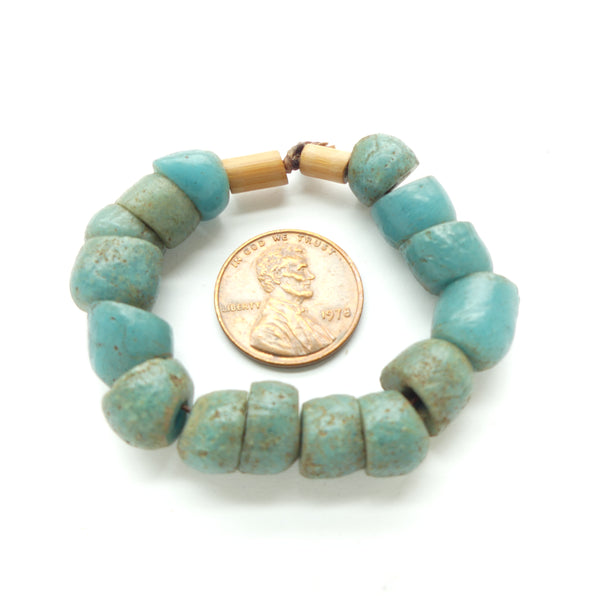Powderglass, Rare Turquoise Color 1970s Ear Beads 6x10mm on Short 4-inch Strand
SKU: AFG-165
Sale price
$5.00
Shipping calculated at checkout
Out of stock
Description
- Powderglass, 1970s or earlier in a rare turquoise color. I don't know of any bottles of this color available at the time so these could have been made from older beads of European or Islamic origin. We don't like to think about old beads being melted down, but the Ghanaians especially had their own ideas about what they wanted their beads to look like and didn't shy away from modifying imports.
- The shapes and the holes are more uneven than later beads, but that irregularity, combined with the rare color makes these interesting and desirable. This sample came from my Dictionary of Beads collection.
- Ground glass, the consistency of sand, was funneled into 5x8mm depressions in a clay tablet. A small stick was inserted in the center of each glass filled space. When the clay slab was heated the glass would melt enough to fuse and the stick would burn away leaving the hole.
- These were what I now call level 1 powderglass beads. Level 2 saw the advent of different colors of glass being layered on top of each other creating horizontally striped beads. Level 3 brought vertical stripes and we are now at Level 4 where glazed surface decorations have taken over from patterns made with the powder in the mold.

